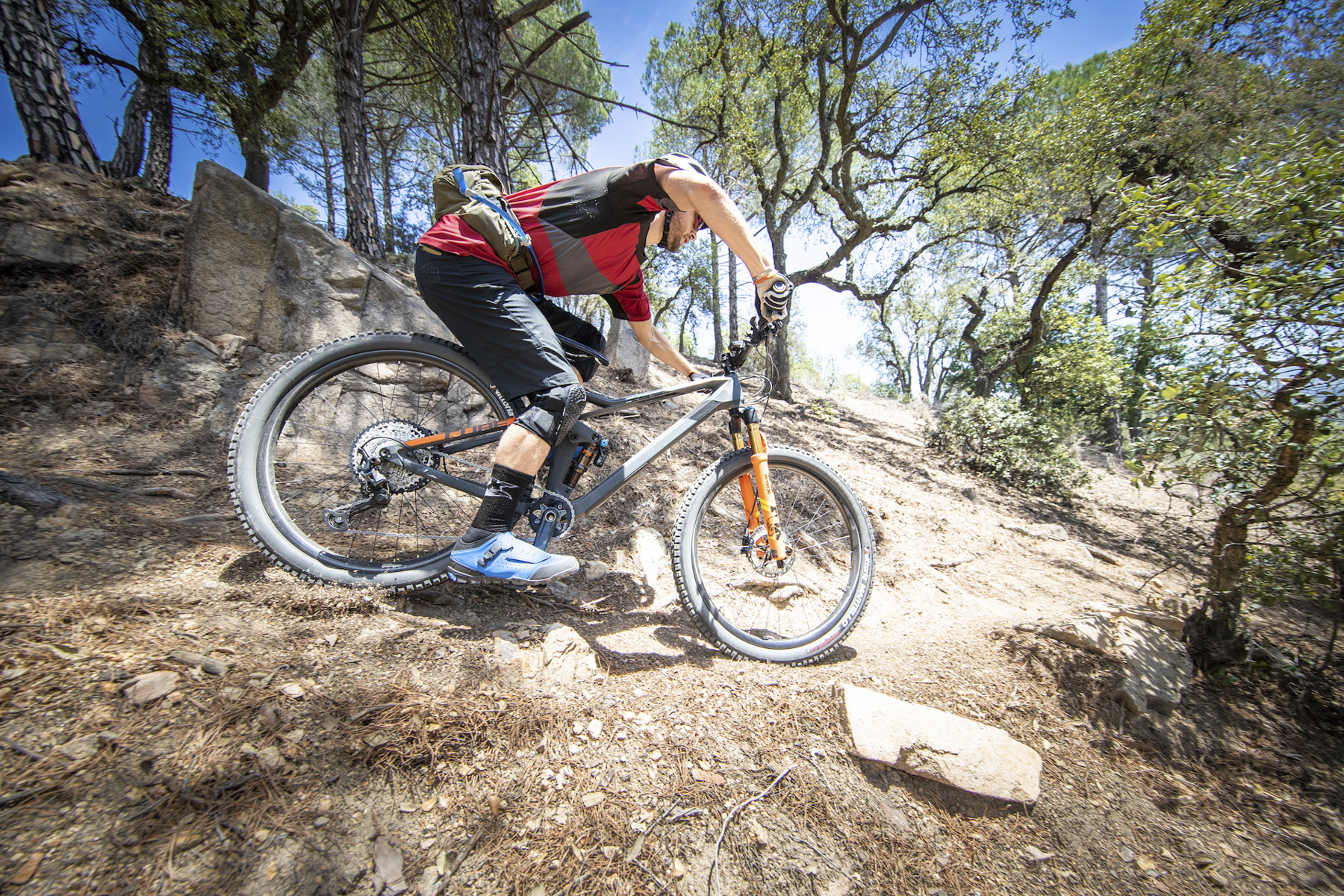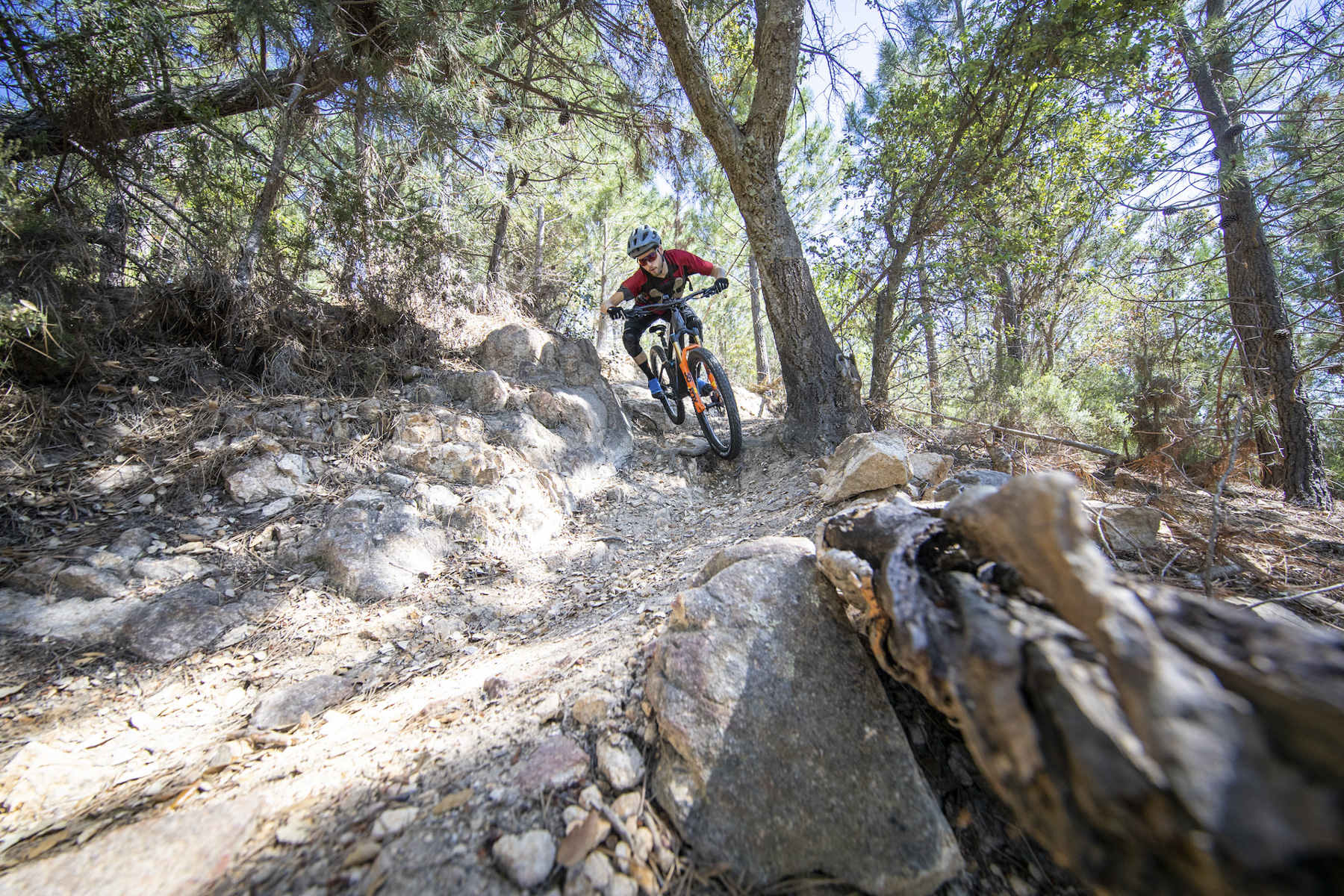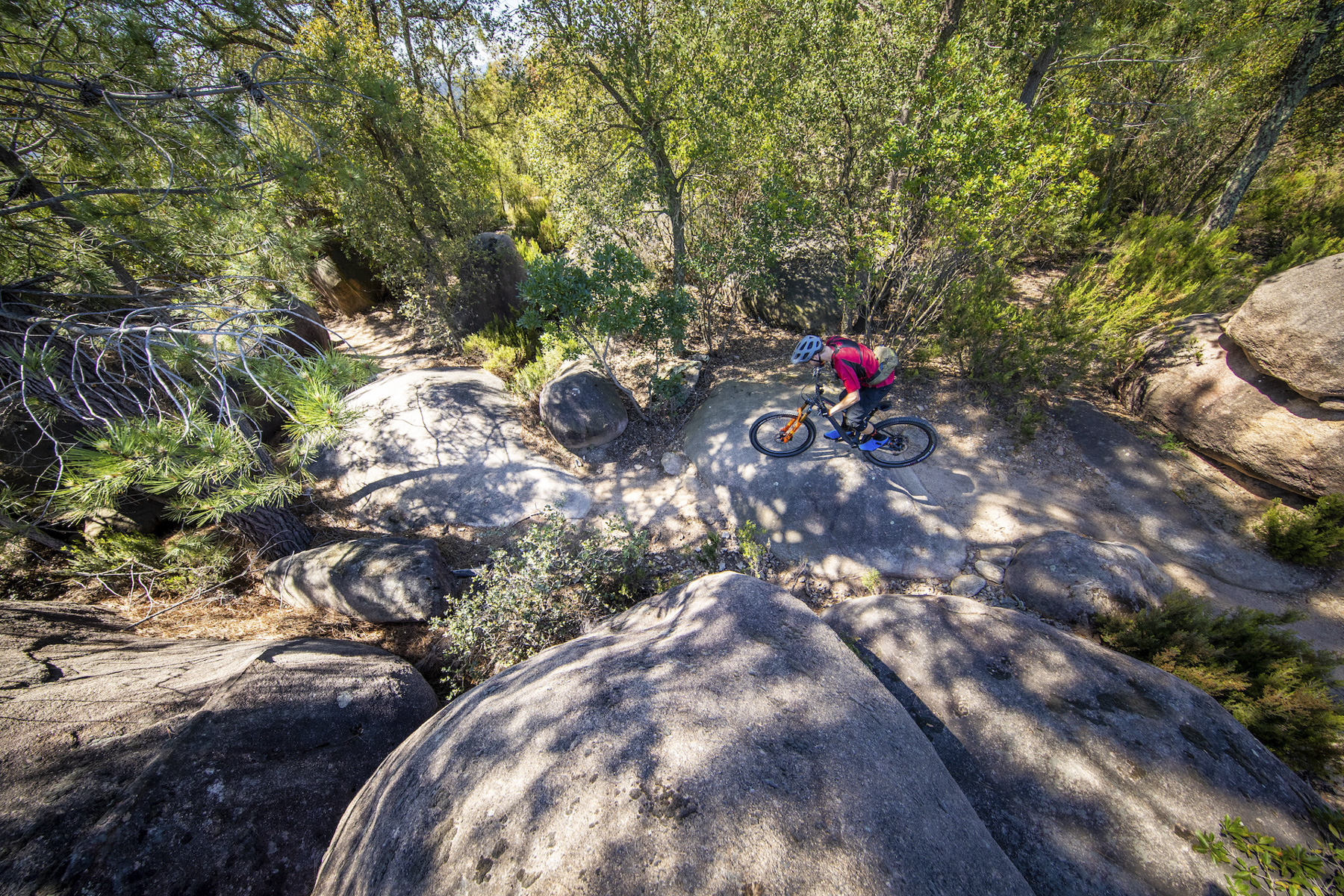Wil gets his grubby mitts on the new Shimano SLX M7100 groupset for an early ride review
In case you hadn’t heard the news, Shimano has just announced it will be rolling out both new XT and SLX groupsets for 2019.
Having launched XTR 12-speed last year, the Japanese brand is trickling down some of that same technology into more affordable packages. And while we remain somewhat skeptical given the delays in production with XTR, the Japanese brand assures us we are mere weeks away from seeing SLX hit the theoretical shelves.
Shimano SLX M7100 In A Nutshell
Just like XTR and XT, the new SLX drivetrain kicks up a notch and goes 12-speed. The groupset will offer both 1×12 and 2×12 drivetrain setups, along with 2-piston Race and 4-piston Enduro hydraulic disc brake options.
There are new SLX hubs too, with the rear hubs being based around the Micro Spline freehub standard. This smaller freehub body is necessary to accommodate the new 12-speed cassettes, which Shimano will be producing in both 10-45t and 10-51t ratios.
Weight-wise, a full Shimano SLX M7100 groupset is apparently just 148g heavier than an equivalent XT groupset, and 513g heavier than an XTR groupset. This comes down to changes in materials and construction, which see SLX taking a more utilitarian approach to both functionality and aesthetics. Oh and price too – a 1×12 SLX drivetrain is nearly a 1/3rd of the price of XTR.
For full specs, prices and claimed weights, make sure you check out the detailed tech feature here.
Girona Testing
As part of the ‘SLXT’ launch, Shimano invited me and a bunch of other journos out to Girona in Spain to test out as many of the various groupset configurations as possible over three days of riding.
For the first and third days, I rode the new Deore XT M8100 groupset, which you can read all about here.
On the second day I was plonked aboard a Cube Stereo 140 trail bike to ride the ‘Enduro Loop’, while testing out the SLX M7100 1×12 drivetrain and 4-piston Enduro brakes.
These were unfamiliar trails to me, which isn’t usually ideal from a testing perspective. However, the variety of the terrain would prove otherwise. Steep, long fireroad climbs proved to be a good opportunity to give the low-end of the cassette a thorough workout, while the sketchy, even-more-steep and off-camber descents would ensure a thorough exploration of the SLX M7100’s braking control.
I-SPEC EV Adjustability
As with XT and XTR, the new SLX trigger shifters are available with a regular bar mount, and in the I-SPEC EV option that sees the shifter mount directly to the brake lever clamp.
I really like this from a setup perspective, as it allows you to position the shift paddles in the right spot for your digits. There’s 14mm of lateral and 20° of rotational adjustment via a single 3mm hex key.
Sleek SLX Shifting
To bring the cost down, the SLX shifter ditches the rubber grip panels found on the XT and XTR shift levers. There’s also no multi-release function for the up-shift, which means you can only click up one gear at a time. It’s not the end of the world, but it is something you do notice when coming off of XT or XTR. You can down-shift up to three gears in one throw of the big paddle though.
The biggest difference is the shift feel though. While XT and XTR are really punchy in their action, particularly with the smaller up-shift paddle, SLX is much lighter. I actually quite like how effortless and smooth it feels, though occasionally found my thumb wishing for the more positive feedback of the XT trigger shifter.
Direct-Mount Chainring
The SLX crankset retains a hollow 24mm steel axle and forged hollow alloy crank arms. The chainring is now a direct-mount setup though, with a spline and lockring-based system used to attach the chainring to the drive-side crank arm.

This is slightly confusing, because the chainring does kinda look like a 4-bolt setup. Technically it’s actually an eight bolt setup.
If you look at the backside of the chainring, you will see eight small torx bolts that hold the steel/resin chainring to the central spider. These bolts aren’t designed to be undone though – they have a special interface and are torqued and glued in place at the factory with a specific tool.
Why design the chainring like this in the first place rather than just have a one-piece chainring like XTR? Because it’s cheaper to manufacture. From what I can tell, there’s a single alloy central spider that Shimano can forge in high quantities, and then bolt the 30, 32 and 34t steel outer chainrings onto. While the ring is heavier than XTR, the steel teeth are likely to offer greater longterm durability.
Gearing Options
Out back, Shimano is offering both 10-45t and 10-51t cassette options. You can run both as a 1x setup, though if you’re eyeing off a 2×12 setup, you’ll only be able to use the smaller 10-45t block.
There are also two rear derailleurs; a 1×12 mech (10-51t) and a 2×12 mech (10-45t). Each mech has a setup guide on the back of the jockey wheel cage to help you align the derailleur correctly when setting B-tension. Why two mechs? Because Shimano is Shimano, and the slight difference in approach angle for the two cassettes lead them to creating specific slant angles for each block.
Compared to XT, the Shimano SLX M7100 mech moves to cheaper bushings for the jockey wheels (instead of bearings), and while the Shadow Plus clutch is adjustable, you’ll have to remove the cover to get at it.
Techy Teeth
All the test bikes I rode at the launch were equipped with a 1×12 setup, with a 30t chainring on the front and the 10-51t cassette on the back. The 510% gear range just trumps SRAM Eagle cassettes (500%), though it does come short of the 578% range of that humongous KCNC cassette. Still, I found the range to be sufficient for the steep mountain climbs we rode during the launch.
As I found with the XT groupest, shifting under power is incredibly reliable and direct with the SLX cassette. Shimano is very proud of its Hyperglide+ technology, and rightfully so. You can absolutely mash on the pedals, out of the saddle, and the chain will still shift under load – whether you’re shifting up or down. All the subtle tooth profiling that Shimano’s engineers have worked into the cassette sprockets has done wonders to ensure the chain glides across each gear with next to zero loss in drive. It’s very impressive stuff.
Up front, the chain meshes smoothly with the narrow-wide tooth profile of the chainring. Of course Shimano has another snazzy name for that (Dynamic Chainring Engagement+ if you were wondering). Combined with the new 12-speed chain, which gets extended and angled inner plates that hug the chain more tightly, there is very little risk of complete derailment.
Shimano SLX M7100 Braking
Matching the 1×12 drivetrain, my test bike was outfitted with the new SLX Enduro brake option. These feature 4-piston callipers, compared to the SLX Race brakes that use a 2-piston calliper.
The SLX lever is all-new, and integrates the I-SPEC EV design I mentioned earlier. You get a tool-free reach dial, but you miss out on the Free Stroke adjuster, which is fine because it doesn’t do much. The lever blade itself also skips the textured dimples that you find on the XT and XTR levers.

Shimano says the 4-piston option offers 22% more power than the 2-piston jobbers. When riding, this power comes fairly late in the piece – in a good way. There’s still that familiar rock-solid bite point that Shimano hydraulic disc brakes are known for, but when the pads engage there’s a really usable amount of modulation early on.
In fact, I actually found the modulation to be better with the Enduro brakes compared to the Race brakes. This was particularly noticeable on the loose kitty litter trail surface we found ourselves riding on the way back down the mountain. Feathering the brake feels easy and predictable, though when it’s time to really pull up the stops, that additional power is there when you need it.
Noisy Pads
Throughout the day, my brake levers remained nice and consistent, despite dragging the anchors in fear down some quite-steep-for-me descents. That said, I did notice some rattling from the brake pads.
On rougher trails, this light rattle/ticking is rather annoying, and is really the only downside with the 4-piston stoppers. I have experienced the same phenomenon with XTR Enduro brakes, and I also experienced it during the launch with the XT Enduro brakes too. I tried spreading the pad springs to brace the pads more tightly within the calliper, but I couldn’t completely eliminate the noise.
From what I can tell, this rattle is caused by the fins banging against the calliper body. I’d like to try out the brakes again with the non-finned pads to see if it gets rid of the noise, since I’m a rather sensitive soul and these sorts of things bother me a lot.
First Ride Impressions
While Shimano SLX M7100 comes in at a cheaper price point compared to XT and XTR, the shifting and braking performance honestly leaves very little to be desired. It’s not quite as smooth as XTR, but you’d have to ride both drivetrains back-to-back to really tell. This SLX stuff is properly solid.
The Hyperglide+ shifting in particular is mighty impressive, and the fact that you can back-pedal or shift under load, without fear of the chain derailing, will be reassuring for those with a messier pedalling and riding style.
The rattling brake pad issue is mildly annoying, but I’m confident the regular non-finned pads will solve that issue.
Otherwise, with the price the new Shimano SLX M7100 groupset is coming in at, I’d expect to see this being spec’d on a lot of bikes this year.
Disclaimer
Wil’s flights and accommodation for the XT/SLX launch were covered by Shimano





















Old news
😉
I know what I’m going for when the GX 2X on my Jeffsy wears out. The shifting has been fine but be nice to simplify and get rid of the awful awful awful GuideR brakes with SLX